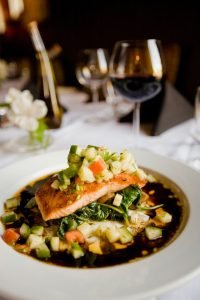Peculiarities of Cooking with All Purpose Seasoning: A blog about using all purpose seasoning in your cooking routine.
While many people are familiar with the basic spices, such as salt and pepper, there is a deeper world of spice out there that extends beyond simple seasonings and into the realm of complex flavor profiles. In this blog post I will examine how an often overlooked spice, All Purpose Seasoning (AP), can be used to enhance a variety of dishes from basic scrambled eggs to gourmet steak.
There are many variations of AP seasoning available at the grocery store and they all have different combinations of ingredients. Regardless of which specific mix you prefer, it is important to understand that AP is comprised primarily of salt, pepper, garlic powder, onion powder, paprika and other herbs and spices like oregano or thyme.
All Purpose Seasoning can be used in a variety of ways; however, it most commonly serves as a way to add extra flavor to meat based dishes. For example, many people use All Purpose Seasoning as a dry rub on steak prior to grilling. It can also be used with vegetable dishes such as roasted potatoes or corn on the cob. With one simple sprinkle you can turn ordinary into extraordinary!
As you can
Cooking with all purpose seasoning is excellent for the hobbyist cook, because it allows your creativity to flourish. All purpose seasoning can be used in just about any dish, so you can add a little bit of flavor to any meal.
If you love using all purpose seasoning in your food, then you’ll love this blog! We’re constantly adding new posts to our website, so you’ll always have fresh recipes and ideas to try.
We believe that all purpose seasoning should be an essential part of every kitchen cabinet. Whether you’re making a delicious vegetarian dish or a quick snack for the kids, you can always rely on a little something extra from all purpose seasoning.
All purpose seasoning is convenient, but it can be tricky to cook with. If you’re not careful, your dishes could end up tasting bland or worse. Here’s a guide to cooking with all purpose seasoning so you can make the most of your recipes:
How much all purpose seasoning should I use?
The amount of all purpose seasoning you need for a recipe depends on the size and type of recipe you’re making. A good rule of thumb is to add 1 tablespoon of all purpose seasoning to 4 servings of food. If a recipe makes 2 servings, use 1/2 tablespoon; if a recipe makes 6 servings, use 1 1/2 tablespoons. For rices and grains, add 1 teaspoon per serving.
Can I use all purpose seasoning in my slow cooker?
Yes! Because slow cookers are known for making bland foods taste delicious, adding all purpose seasoning will help your dishes come out even tastier. We recommend adding 1 teaspoon of all purpose seasoning per 4 servings, stirring the dish once halfway through cooking.
Can I use all purpose seasoning in desserts?
You bet! All purpose seasoning adds an element of savory flavor to sweet desserts with ingredients like chocolate, caramel, and nuts. Our favorite dessert with all purpose seasoning is dark chocolate peanut butter
Recently, I was invited to make a presentation at a conference on the topic of all-purpose seasoning. I took this as an opportunity to give my audience a tutorial on the various ways in which they could incorporate all-purpose seasoning into their daily cooking routines. The following is an excerpt from my presentation.
In general, all-purpose seasoning can be used in almost any situation where salt and pepper is called for. It offers much more flavor than either of these simple seasonings and is more versatile as well. Here are some situations where all-purpose seasoning really comes into its own:
1. Pasta sauce
2. Salad dressing
3. Roasted vegetables
4. Fried chicken
5. Meatloaf
6. Mashed potatoes
7. Burger meat (when making your own patties)
All purpose seasoning adds an extra kick to your cooking. It’s great in soups, stews and even on fruits and salads! Here are a few tips that will have you cooking with all purpose seasoning like a pro.
All purpose seasoning is a mix of different spices that can be found in the spice aisle at any grocery store. You can use it in place of salt to give your dishes an extra burst of flavor.
You can also use it to add flavor to things like eggs, rice, or even roasted vegetables. Instead of adding salt to the water you cook rice in, add some all purpose seasoning instead! It’s a great way to make bland foods taste better without adding too many calories or sodium.
For example: if you’re making soup from scratch try adding some all purpose seasoning instead of salt when you sauté the vegetables beforehand-it will give them an extra bit of flavor without having to add any extra ingredients (and save on calories too!).
Super easy tip: try sprinkling some all-purpose seasoning over your fruit salad for a quick and tasty way to add more flavor without using sugar or other sweeteners like honey.”””
All-purpose seasoning is a popular spice blend that you can use on almost everything in your kitchen.
When I say “everything,” I mean it. If you have some all purpose seasoning in your pantry, you can take whatever boring meal you were planning to eat and make it so much more interesting!
All-purpose seasoning is a mix of salt, pepper and sugar. In fact, the most common brand is called All Purpose Seasoning. This means that any recipe which calls for salt and pepper already has the basic building blocks for an amazing all purpose seasoning spice mix. Sauce recipes often call for sugar as well, so if you add some of this to your next batch of spaghetti sauce, you’ll be well on your way to making the best homemade pasta sauce!
All purpose seasoning is a salt free, all-natural spice mix that imparts flavor to a wide range of dishes. It contains onion, garlic, parsley, pepper, whole and crushed red pepper, black pepper, celery seed, dill seed and turmeric.

